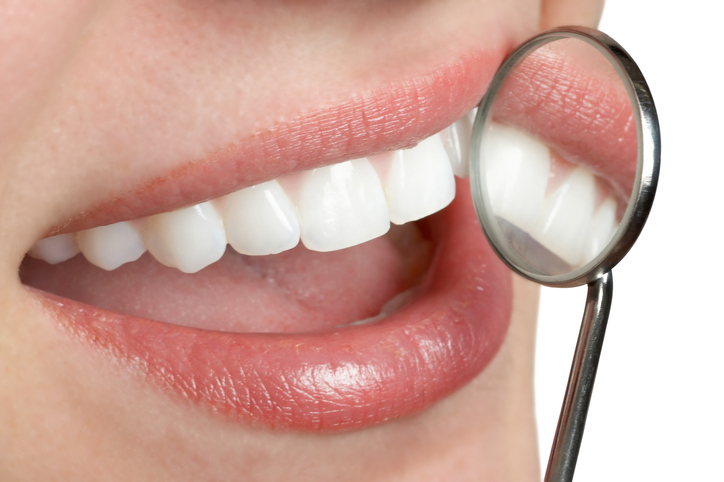
Periodontal disease, also referred to as gum disease, is a leading threat to dental health, affecting around two out of every five adults in the United States. In its earliest stages, gum disease can be treated, but as it advances, it cannot be reversed—a fact that underscore the need for regular dental checkups and early intervention. Gum disease treatment depends on the disease’s stage, the overall health of the patient, and how the patient responded to previous attempts to treat the disease.
Gum disease is more complex than just inflammation or infection in the soft tissue of the gums. Periodontal disease can have repercussions not just on your oral and dental health and the beauty of your smile, but also on your overall general well-being and wellness. In fact, gum disease and the bacteria that comes with it have been linked to diabetes, heart disease, and some types of cancer.
A Progressive Disease
Gum disease progresses in four stages, with dental professionals classifying a patient’s current stage based on the symptoms experienced and an examination of the gums. The gum disease treatment options available to a patient with gum disease depend largely on the stage of the disease. Gum disease can be quite serious, since it progresses from minor gum irritation to a disease that affects the bones and supporting ligaments of the mouth.
Nonsurgical Treatments for Gum Disease
The first stage of gum disease is known as gingivitis, and it is gum disease in its mildest form. The hallmarks of gingivitis include minor irritation of the soft tissue, redness of the gums, inflammation, swelling, and some minor bleeding during brushing or flossing. A diagnosis of gum disease when it is in this first stage usually leads to a full reversal of the disease process. Still, because side effects of gingivitis and its symptoms are quite mild, many patients do not notice them, and it is only when the patient comes in for a dental checkup and/or dental cleaning that the dentist recognizes the onset of gum disease.
If your dentist determines that you have gum disease during a checkup or cleaning, then they may recommend that you have your teeth cleaned more often than the standard recommendation of every six months. While dental cleaning does not treat active gum disease, it is a critical preventive procedure that may help keep the disease from progressing as quickly.
When periodontal disease reaches its second stage, early periodontitis, the disease is not completely reversible, but it can be managed. At this stage, the patient’s soft tissue has sustained damage and there is a weakening of the smile’s supportive bone structure.
Scaling and root planning procedures may be recommended for gum disease after this point. This nonsurgical remedy—performed under a local anesthetic—removes tartar and plaque from below and above the gum line and involves planing away rough spots on the teeth. For some patients, scaling and root planning may be enough to treat their periodontal issues and avoid surgery.
At-home therapies such as antibiotic rinses may help, as can special nonprescription toothpastes containing triclosan. There are also in-office therapies to treat the disease at this point that can be effective at managing it. All nonsurgical treatments for gum disease have one main goal: helping to stop or slow-down bacterial growth.
Surgical Gum Disease Treatment
Nonsurgical treatment of periodontal disease is not always possible or effective to manage the disease or repair the problems that it has caused. Because of that, surgical intervention for gum disease is sometimes necessary to treat the problem and prevent further tooth loss and other issues. The main goal of a surgical gum disease treatment approach is to restore the gum tissue that surrounds and supports the teeth.
The most common type of surgical intervention for gum disease is osseous surgery—sometimes called flap surgery or pocket-reduction surgery. This surgery involves lifting the gums back, removing tarter, and sometimes smoothing irregular areas of bone, effectively limiting the number of places where bacteria can thrive. Next, the gums are restored to their natural position, which involves fitting them in a natural way around the teeth but in a way that decreases the amount of space that bacteria have available to develop.
Depending on the patient’s treatment plan, a periodontist may place a gelatin-filled chip containing a special antibiotic in the periodontal pocket during osseous surgery. These antibiotics such as chlorhexidine and minocycline HCI, help control inflammation and plaque, and feature a slow-release formula that delivers the antibiotics over the course of a week or so. Oral antibiotics, including minocycline, tetracycline, and doxycycline, are also sometimes prescribed to combat the ill effects of gum disease.
This type of surgery for gum disease benefits the patient in myriad ways. First and foremost, it helps to reduce the spread of bacteria that can enter the blood stream and result in inflammation, so your whole body is healthier. The procedure also halts bone loss that results from the bacteria-inducted inflammation that can otherwise destroy bone tissue. The result is a more natural-looking jawline and the ability to save your natural teeth.
Recovery time from this type of dental surgery for gum disease is relatively simple and uncomplicated. The majority of patients undergoing osseous surgery experience a fast recovery, with the biggest side effect being mild swelling. Generally, over-the-counter NSAID pain relievers, such as ibuprofen, for example, are recommended following the surgery.
Professional Treatment for Gum Disease
The time needed to treat gum disease, the level of discomfort involved, and the healing time for any procedure depends on the patient’s individual circumstances and severity of disease. Dr. Roll and the team at Pinnacle Center – Dental Implants & Periodontics are among the best when it comes to treating periodontal disease, with most procedures performed in the office. Schedule an appointment to discuss your treatment plan now.

